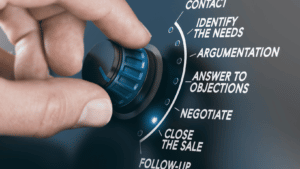Experiential Marketing is experience-based. Experience is positively related to our mood, decisions and purchasing behaviour. Customers today are increasingly making decisions based on physical and interactive experiences, and not merely just as the end consumers or passive receivers.
They seek personalized memorable experiences to make them feel like they are part of the brand’s journey. In fact, according to a study, 70% of customers who engage in a great experience with a product and/ or service are far more likely to buy from that brand.
For this reason, you need a form of unique marketing strategy to thrive in today’s business landscape aka Experiential Marketing. Understandably, it does sound similar to some of the marketing terms that marketers use like Event Marketing, Live Marketing, Participation Marketing or Loyalty marketing.
However, a lot of these strategies tend to overlap with one another and are often interchangeable to achieve the same results – stimulating brand interest, giving brand loyalty a boost and giving customers a memorable experience.
Before we dive deeper, let’s understand how the process works in Experiential Marketing.

Process in Experiential Marketing
Most brands are driven by traditional marketing strategies and have almost forgotten about creating a personal experience with their customers. As a marketer, implementing the five-step process in Experiential Marketing is vital towards creating an awesome and personalized experience for you and your customers.
Authentic Storytelling
Experiential Marketing is akin to storytelling – choose those that best illustrate your brand’s history, offerings and/ or competitive edges through a narrative tale. This is usually best done in-store, via through social media or content. In most cases, this leads to an increase in brand awareness, sentiment and trust.
Telling your brand’s story is not just about putting out the facts in text – you need to create a meaningful and impactful experience that will give value to your target audience. Applying this strategy may lead to more engaged customers who are passionate about which vendor they are buying from.
Sensory Engagement
It is important to engage the five senses in your Experiential Marketing campaign because it would allow you to capture and retain customer attention for a longer span of time.
With the use of the five senses – smell, taste, touch, sight, and sound, the customer experience is more likely to be amplified. There are many ways to engage the customer’s senses and some classic examples include a pop-up kiosk that offers free samples of food or beverage, a test drive with a limited-edition car, an interactive billboard, or using sound to positively impact the mood of shoppers in a supermarket.
The great advantages of these multisensory experiences are that you successfully influence customers’ perceptions of your products and/ or services but also leave a long-lasting and memorable impression about your brand.

Personal Interaction
When it comes to execution of a marketing campaign, we know that personal interaction is the catalyst to a successful one. It is characterized by four important elements – active engagement, trust, purpose and community relationships. These elements have been identified as key factors to determine if customers see value in the products and/ or or services offered.
One case study of this marketing campaign was seen back in 1906 where Joe Nathan, then CEO of Defiance Powdered Milk (now known as GlaxoSmithKline, GSK) got his nurses to personally respond to thousands of customer inquiries about how to raise a healthy baby with handwritten letters that were sent back to every individual customer. Their strategy had won over thousands of new customers who later spent money on buying their powdered milk.
Emotional Impact
Emotional impact is often affiliated with Experiential Marketing. That is because no matter what your business sells, chances are, there is bound to be another product and/ or service that is very similar to yours.
Therefore, consumers do not become your customers simply because you can provide them with whatever it is they are looking for, but it is due to them forming an emotional attachment with the product and/ or service. In a nutshell, it is about giving customers something to buy into, not just something to buy!
Experience Sharing
Time and again, experience sharing has proven to be the shortest path to new networks. This happens when customers become your “brand ambassadors” and in turn, drives word-of-mouth advertising. This is usually best done by customers sharing their buys and/ or reviews with specially crafted hashtags on social media.
Another method is through recommendations on e-commerce websites. Amazon has a “Recommended for you” section for consumers and this helps to increase sales significantly.

Milestones In Experiential Marketing
Last, but not least, how do you measure the effectiveness of an Experiential Marketing campaign? The answer lies in setting specific goals or milestones and tracking them diligently.
Goals or milestones are the various points in your marketing campaign’s lifecycle when something substantial has been achieved. These may include increased brand awareness, lead generation, heightened product interaction, identification of target audience and increased social engagement or sales. Ideally, you should be able to evaluate and break down exactly what the campaign did for your organization based on milestones.
In summary, the era of dead advertising is fast becoming a thing of the past, being replaced by Experiential Marketing. The future of Experiential Marketing will be exploding with engagement, consumption and brand loyalty. When your brand can engage customers effectively, sales and brand loyalty will happen naturally.
Do you want to know how to navigate Experiential Marketing, engage your target audience effectively and increase business growth? Write to us at info@businessacademia.co
Business Academia’s Vision
Our goal is to connect the space between Business Goals, Results and People’s Engagement with consultancy services, tailored experiential workshops and training. We use effective facilitation methods such as Design Thinking to define, together with you, how to engage and motivate people to the desired Change and Action.
More information @ www.businessacademia.co



